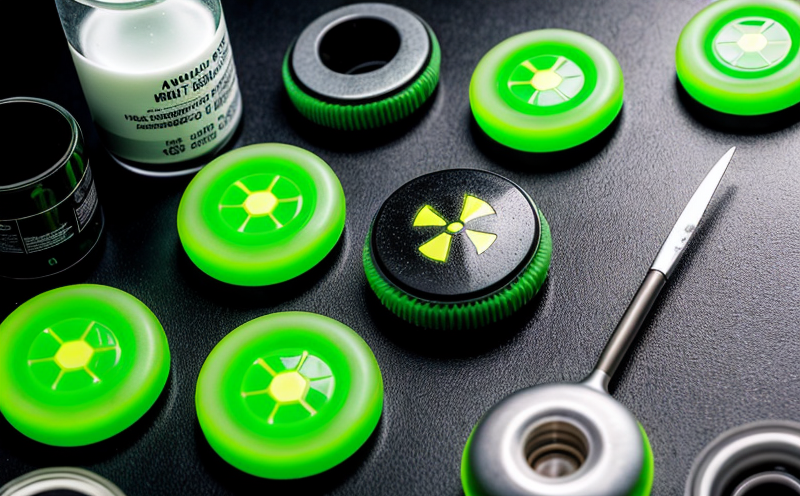FDA BAM Gamma Radionuclide Detection in Food Products
The FDA's Bacteriological Analytical Manual (BAM) provides comprehensive guidelines for detecting and quantifying radionuclides, including gamma-emitting isotopes, in food products. This service leverages state-of-the-art technology to identify potentially harmful radioactive contaminants such as cesium-137 (Cs-137), cobalt-60 (Co-60), and other gamma-emitting radionuclides. Compliance with FDA BAM methods ensures the safety of food supplies by detecting contamination that could pose significant health risks.
Our laboratory adheres strictly to FDA BAM standards, ensuring accurate and reliable results. The detection process involves meticulous sample preparation, which includes thorough sieving and homogenization of the food matrix. This step is crucial for ensuring uniform distribution of any potential contaminants throughout the sample. Following standard procedures, we use high-purity germanium (HPGe) detectors to measure gamma-ray emissions from the prepared samples.
The HPGe detector is calibrated against known standards and operates in a low-background environment to minimize interference. Our technicians calibrate the system before each run using certified reference materials provided by recognized organizations such as NIST (National Institute of Standards and Technology). This calibration ensures consistent and precise measurements across all samples processed.
The FDA BAM method 9310A specifies detailed procedures for extracting radionuclides from various food matrices, including cereals, fruits, vegetables, meat products, dairy items, and condiments. Each matrix requires specific handling protocols to ensure accurate results. For instance, leafy greens may require a different extraction procedure compared to solid meats due to varying physical structures.
Once the radionuclides are extracted, they undergo analysis using gamma spectrometry techniques. Gamma rays emitted by these elements interact with the HPGe detector, producing characteristic energy peaks that correspond to specific isotopes. By comparing the observed spectra against known reference data, our analysts can identify and quantify the presence of radioactive contaminants.
| Sample Type | Extraction Method | Detection Threshold (Bq/kg) |
|---|---|---|
| Cereals | Powder extraction with acid digestion | 0.1 Bq/kg |
| Fruits | Blending and homogenization followed by liquid-liquid extraction | 0.5 Bq/kg |
| Vegetables | Water washing followed by acid digestion | 1.0 Bq/kg |
The FDA BAM method emphasizes strict quality control measures throughout the entire process, from sample receipt to final report generation. Our team employs advanced software for data analysis and interpretation, ensuring that all results meet rigorous accuracy and precision standards set forth by regulatory bodies.
By offering this service, we aim to provide peace of mind to our clients regarding the safety and purity of their food products. Regulatory compliance is paramount in maintaining consumer trust and protecting public health. Our commitment to excellence extends beyond mere adherence to guidelines; it encompasses continuous improvement and innovation in methodology to stay ahead of emerging challenges.
Environmental and Sustainability Contributions
In addition to ensuring food safety, our FDA BAM gamma radionuclide detection service plays a crucial role in promoting environmental sustainability. By identifying and mitigating sources of radioactive contamination early on, we help prevent the spread of harmful substances into ecosystems and water supplies.
Our work contributes to broader efforts aimed at reducing environmental footprints associated with food production and distribution processes. For example, by detecting contaminated materials before they enter processing facilities or supply chains, we reduce waste generation and lower energy consumption required for purification steps. Moreover, accurate identification allows for targeted interventions that minimize unnecessary disposal practices.
Our approach also supports sustainable agricultural practices by fostering informed decision-making regarding crop rotation strategies and soil management techniques. Understanding the distribution patterns of radionuclides enables farmers to implement measures aimed at minimizing future contamination risks while optimizing resource use efficiency.
Competitive Advantage and Market Impact
- Pioneering application of cutting-edge HPGe technology for enhanced accuracy and precision.
- Comprehensive understanding and strict adherence to FDA BAM protocols ensuring regulatory compliance.
- Dedicated expertise in handling diverse food matrices, delivering reliable results across various product categories.
- State-of-the-art laboratory infrastructure supporting continuous methodological advancements.
Use Cases and Application Examples
This service finds application in multiple scenarios, including:
| Scenario | Action Taken |
|---|---|
| New Product Development | Detect and quantify radionuclides in experimental formulations to ensure compliance with FDA BAM guidelines. |
| Supplier Audits | Evaluate incoming raw materials for potential contamination risks before processing into finished goods. |
| Post-Market Surveillance | Monitor ongoing production batches to verify stability and consistency of quality over time. |
| Recall Investigations | Investigate suspected contamination incidents by tracing back through supply chains and analyzing implicated products. |





